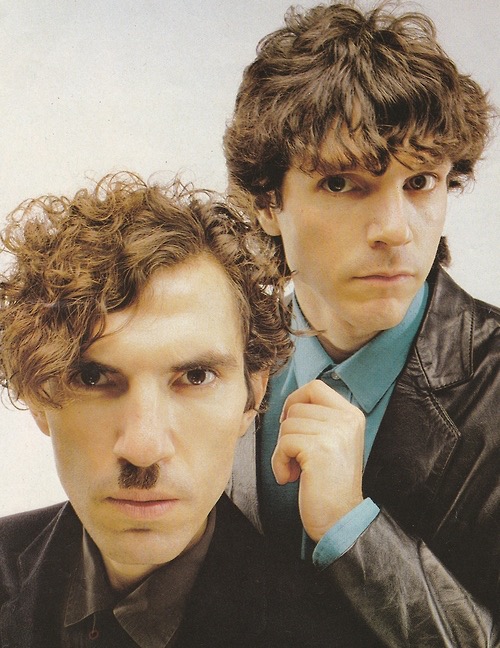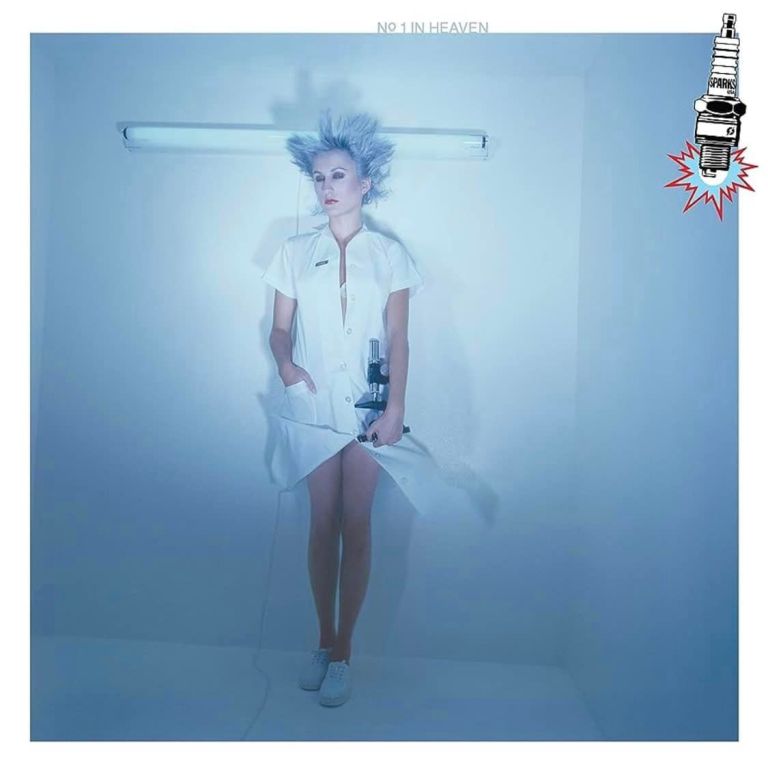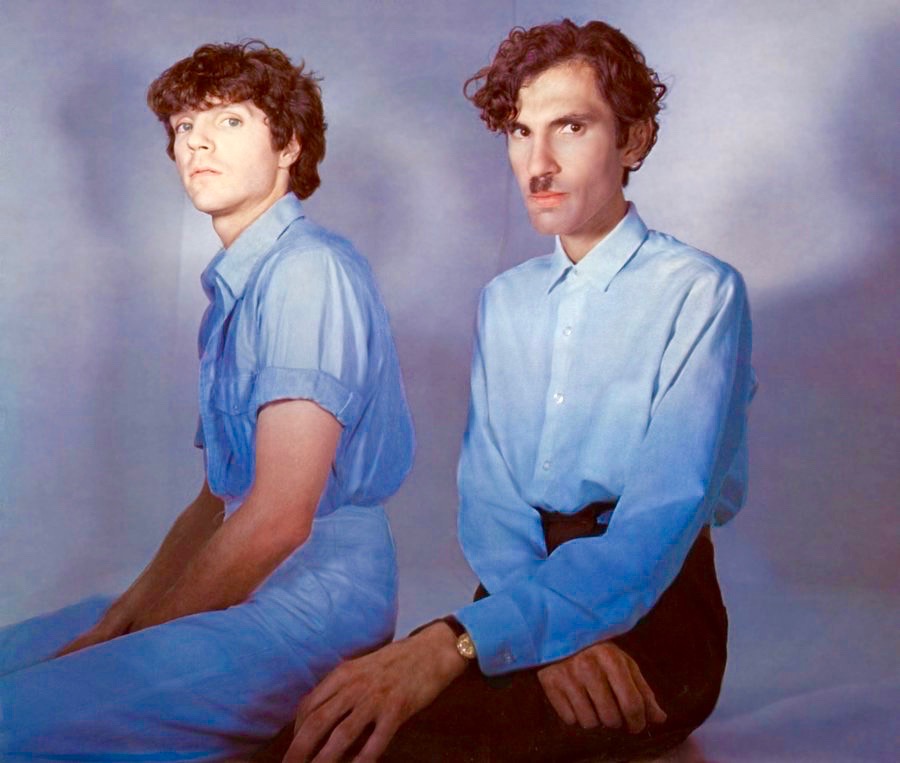This Ain’t No Disco!
No. 1 In Heaven
How Sparks Parted The New Wave
By Madeline Bocaro
https://linktr.ee/madelinerocks

© Madeline Bocaro, 20008 / 2024
. No part of this site may be reproduced in whole or in part in any manner without permission of the copyright owner.
In Edgar Wright’s 2021 documentary The Sparks Brothers, we learned that Ron and Russell Mael told a journalist (during a late 1970s interview) that they would be working with Munich-based Italian euro-disco producer Giorgio Moroder on their next album. The writer was close friends with Moroder, who had never mentioned any project with Sparks. However, she introduced the brothers to Giorgio, and the rest is history. The moral of this story: what seems like a white lie can really be a manifestation of your wish!
Moroder had only produced singers (with tremendous success) not bands, but he agreed to try something new. The album was a true collaboration between Moroder and the Maels.
In 1979 punk rock was still raging in England. Disco had devoured America. So where did Sparks fit in? With disco in England of course! This didn’t make much sense at all to their fans, but the Mael brothers made the best of both worlds.
Their take on disco had a European edge, coupled with Sparks’ trademark pop sensibility. It became the perfect formula for a groundbreaking new sound that would resonate through the decades.
They may or may not have known it at the time, but Sparks were prophetically writing The Ten Commandments of Synth-pop. Unfortunately, the commandment most often disobeyed by their eventual followers was, “Thou Shalt Be Original.”
In the days when Sparks were releasing an album per year, No. 1 In Heaven (their eighth) was the follow-up to the surprisingly ordinary Introducing Sparks. Ordinary became extraordinary – seemingly overnight. As suddenly as Tyrannosaurus Rex became electric warriors, and as shockingly as when Bob Dylan went electric, Sparks went electronic! They got as much flak from their fans as Dylan and T. Rex did in their time, but some of us were hip to this new change and new fans became enlightened as well.
The music press gave the album equal shares of praise and damnation. Sparks’ musical prophecy would ring true… in time.
For almost a decade, the usual Sparks album had consisted of ten succinct, highly unusual pop songs. No. 1 In Heaven gave us six extended, highly unusual epics – the shortest just under five minutes, the title track being the longest – outlasting both “Hey Jude” and “Bohemian Rhapsody” at 7:27 (with even longer re-mixes to follow)!
In 1977, Donna Summer’s electronic disco hit, “I Feel Love” – a collaboration between man and machine in a musical Metropolis (approximating Kraftwerk at 78 rpm) was recorded in Munich. The sound was achieved by using composer Eberhard Schoener’s Moog Modular 3P synthesizer. The song was a massive worldwide hit.
The conflicting warmth and sensuality of Summer’s vocal performance over robotic trance music intrigued Ron and Russell, who were already bored within the constraints of a 4-piece rock band. Sparks went right to the source. They recruited Summer’s producer Giorgio Moroder for their radical experiment in marrying pop with electronic music.
Moroder was the only producer using automated devices within popular dance music. This was a time when synthesizers were new, rare, expensive and very large! David Bowie was also recording in Germany with Roxy Music’s Brian Eno (using synthetic instruments for a more decadent ambiance on his albums Low and “Heroes”). Moroder took the reins and found Sparks a U.K. deal with the very supportive Virgin Records (Elektra in the USA).
No. 1 In Heaven was actually recorded in Los Angeles (although Musicland, Munich is listed on the album). Although the Maels were lured toward new electronic sounds, all the drums were played live. The track “My Other Voice” features computerized hi-hat cymbals played in reverse.
“There were no drum machines, so Giorgio had a drummer, Keith Forsey who came in and did 15 minutes of kick drum. The studio in L.A. was all walls of stuff with cables in it…You’d see these red lights go on and we’d go, ‘Wow!’. It was just like a new toy. We could never tour this record at the time because it was (technologically) impossible.”
– Ron Mael, Uncut October 2017

The two women on the front and back of the album jacket – one Caucasian and one Black – appear cold and sterile yet still sexy, as their lab coats are blown upwards like Marilyn Monroe’s white skirt in the film, The Seven Year Itch. Enroute to heaven’s laboratory they each hold a microscope, indicative of the groundbreaking musical experiment taking place on this record. The models were also featured on the stylized re-mix artwork. Sparks’ new logo (a spark plug) flashes in the upper right corner – with a “USA” insignia on American copies).
Angelic nurse imagery. Are sexy nurses your idea of heaven?
Russell: “Like I’ve always said, you can’t go wrong with a woman in uniform.”
The single sleeves and picture discs display robotic mannequin hands and test tubes, mixing 2 parts Rock with 2 parts Disco The chemical reaction was explosive!
The typically brilliant Sparks songs on the album span a lifetime. From conception to death, the lyrical arc begins with “Tryouts for the Human Race” – the album’s ‘sexiest’ song. After a suggestive Sci-Fi intro, Russell lends his voice to those feisty sperm cells (a major aspect of sex that is not usually on people’s minds when having it) in a production about reproduction. A twisted Biology lesson with a sputtering disco beat. “Beat the Clock” gives commentary about fast-paced society. The albums closer is the first song you will hear in heaven (their own “No. 1 Song in Heaven” of course, which peaked at No. 14 on Earth).
On “Academy Award Performance” as well as on the title song, double-tracked vocals allow Russell to sing in two octaves simultaneously! Russell’s soaring vocals prevail over the new synthetic Sparks sound.
Russell told England’s Melody Maker in 1979,
“I wouldn’t be caught dead in a disco!”
Ron expanded his keyboard repertoire with the Yamaha DX-7 and a Fairlight Roland JP-8. He liked the contrast of the cold, inhuman mechanized sounds and mesmerizing beats with Russell’s glorious vocals. Ron un-slicked his hair and grew it long and wavy, resembling a mad scientist – or was it more ‘nutty professor’?
“Beat The Clock” was like a Velvet Underground song when I wrote it at the piano. If you listen to it with that in mind, you can kind of tell, but what Giorgio did with it was amazing.”
– Ron Mael, Mojo magazine UK 2002
Perhaps due to Ron’s mention of The Velvet Underground, there was nearly a collaboration with Andy Warhol…
“…We wanted him (Warhol) to duet with me on ‘Beat the Clock’. We contacted his office and he said, ‘Yeah, I’d love to do that’. And then put us back on to his business manager who said, “Andy will do that – for $10,000. We went, “Ooh, you’ve caught us a little short!” (Laughs) We’d have robbed a bank to get that money, because to have a duet with Andy Warhol would have been amazing.”
– Russell Mael, NME May 2020
The promotional video for “Beat the Clock” featured Ron and Russell (with a bevy of female factory workers) mass-producing life-size cardboard cutouts of themselves in a race against a gigantic clock. Perhaps this was an “indiscreet” commentary upon the tedium and uniformity in rock/pop music and the stereotypes within disco, until they were effectively mixed into one new and exciting medium by Sparks. Charlie Parker never dreamed that “fusion” could sound like this!
Russell: “Some people were taken aback because we were considered a rock band up until then. It was a really bold and provocative album to do at that time. We were pleasantly surprised that it had as much commercial success, for something that initially was kind of controversial. Then obviously with time, the whole history of that album has been rewritten where it is now seen as a Bible for that whole genre of music.”
Russell recalls working with Moroder’s modular Moog synths…
“So much trial and error, and so many options. It was like the old telephone operator thing where you’re patching two phone calls together. You were patching sounds together. But the whole idea of sequencers, back then it was kind of primitive in that everything was divided into 16th notes. By pulling one plug out of one of those 16 slots, it left a hole and that’s what gave you the stutter on that particular beat.”
Initially, the drum track was provided by a Moog-simulated kick, before drummer Keith Forsey added a live beat.
Russell: “Keith just spend 16 minutes hitting a kick drum to a click and then add fills after that. I think that’s also what gave that album less of a robotic feel. It had some bit of humanity to all the electronics because all the drumming was live.”
Ultimately, the result of Sparks’ adaptation of disco remotely resembled the mind-numbing genre. Their special peculiarity and intelligently weird lyrics dominated and a new musical form emerged, providing Sparks with two more UK hits.
Four singles were released. “La Dolce Vita” appeared in early 1979 in European countries. It did not chart. After eight weeks, the title song peaked at No. 14 in the UK. It was Sparks’ first UK hit in four years. They performed the second single “Beat the Clock” on Top of the Pops, which made the Top Ten. However, Sparks would not perform live again in the UK until 1994.
“Tryouts…” reached No. 45 in the UK. Several 12-inch British singles were issued in a varied rainbow of colored vinyl with exclusive longer remixes. America saw the single release “Tryouts for the Human Race” (with “No. 1 Song in Heaven” as the B-side). The Maels portrayed werewolves in the promotional video. America remained oblivious. Perhaps Sparks’ thought-provoking lyrics were too complex for the mindless dancing masses. But subliminally, and with the passing of time, the album influenced others to cross musical boundaries.
The album peaked at No. 73 in the UK for one week only in September 1979. No. 43 was its highest chart position – in Sweden.
Ron: “The downside was that just because of the nature of the technology, we were never able to do that album live until the mid-’90s because there was no way to bring a synthesizer the size of a building with you onto the stage.”
Soon, Blondie would collaborate with Moroder who co-wrote and produced their smash hit “Call Me”. Pop singer M appeared with the percolating hit “Pop Muzik”.
Sparks had spawned the pop duo.
New bands emerged from the UK two by two,
and climbed aboard the ark that Sparks built.
Human League, O.M.D., Gary Numan, Soft Cell and Depeche Mode were at first labeled New Romantic or Synth-pop. The new genre crossed the ocean and became New Wave (eventually spawning Erasure, the Pet Shop Boys and countless others).
The album also influenced Joy Division and New Order…
“When we were doing ‘Love Will Tear Us Apart’, there were two records we were into: Frank Sinatra’s Greatest Hits and No 1 In Heaven by Sparks.”
– Stephen Morris, Joy Division / New Order
To Simon Reynolds, Totally Wired: Post-Punk Interviews and Overviews
“My Other Voice” bears the foretelling line, “I’ll be all you’ll hear for years and years and years.” European bands were now successful on American radio. Sparks, of course, still were not. Ask any of these groups who their inspiration was, and they will inevitably say, “David Bowie.” But we all know who really parted the waves!
Any words of wisdom you would like to share?
“Always cover your synthesizers at night
or the dust can wreak havoc with the keys.”
– Russell Mael, remembertheeighties.com August 2006
“The most thrilling albums to make are those where you go in not having much of a clue what you’re doing or where you’re going, and where, at least once every thirty minutes, you ask yourself, ‘Is this what it means to commit both artistic and commercial suicide?’
That was the case with the No.1 in Heaven album.”
– Ron Mael / Los Angeles, January 2019

Also see my story : ‘No. 1 Song In Heaven’ single
https://madelinex.com/2002/05/30/no-1-song-in-heaven-single-2002/
© Madeline Bocaro 2019. No part of the materials available through madelinex.com may be copied, photocopied, reproduced, translated or reduced to any electronic medium or machine-readable form, in whole or in part, without the prior written consent of Madeline Bocaro. Any other reproduction in any form without the permission of Madeline Bocaro is prohibited. All materials contained on this site are protected by United States copyright law and may not be reproduced, distributed, transmitted, displayed, published or broadcast without prior written permission of Madeline Bocaro.






2 thoughts on “Sparks – This Ain’t No Disco!”